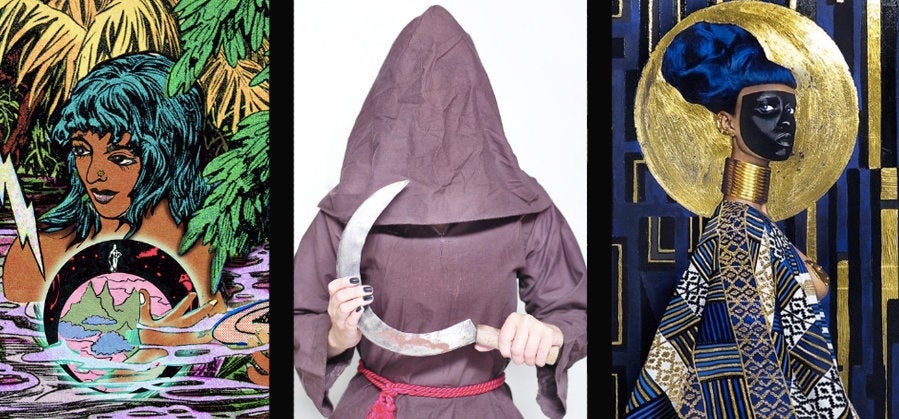According to archaeologist Marija Gimbutas, our earliest spiritual practices as humans revolved around a goddess creator figure known as Mother Earth, an all-powerful feminine force who embodied nature, fertility, creativity and destruction. Paleolithic figures dating back as far as 35,000 years ago, including the famed Venus of Willendorf, illuminate the fact that the earliest devotional altars were made to women.
Millennia later, although universal belief in feminine spirituality is no longer the norm, the spirit of the goddess creator lives on ― particularly through the vision and practice of feminist artists. An exhibition titled “Sisters of the Moon: Art & the Feminine Dimension,” now on view at the Louisville KMAC Museum in Kentucky, features the work of women artists who, in some way, have incorporated the eternal ideas of nature, spirituality, femininity and the occult into their work.

“There is an ancient spirituality that connects to the feminine divine, dating back to the Venus figurines,” Joey Yates, who curated the exhibition, told The Huffington Post. “These contemporary artists want to connect with this, through beliefs that have existed throughout most of our civilization in response to a more patriarchal view of God.”
The show features 16 women-identifying artists from a variety of backgrounds and belief systems working in a wide range of media. All grapple with the idea of feminine magic and what that looks like today. “I did also want to think about Western art and how it has been shaped by certain beliefs to look a certain way,” Yates added. “And us being an American art museum in Kentucky, there is always this dominant Western look. I wanted to include artists who can bring different perspectives, different than I would come to myself.”
Learn about 10 of the goddesses, witches, healers and artists featured in the exhibition below.
1. Katarzyna Majak

In her series “Women of Power,” Katarzyna Majak photographed 29 Polish women who identify as modern-day witches, healers or spiritual leaders. Majak celebrates the powerful women who adhere to unorthodox beliefs ― whether they were influenced by Slavic ceremony, religion, pagan ritual or ancient superstition ― in a country that remains predominately Catholic.
“I show women live examples of empowerment, women who live their own lives and follow their own paths and are courageous enough to show their faces with the hope that this will empower others,” Majak said in an earlier interview with HuffPost. “These are women who know who they are: They are their own queens.”
2. Lina Iris Viktor
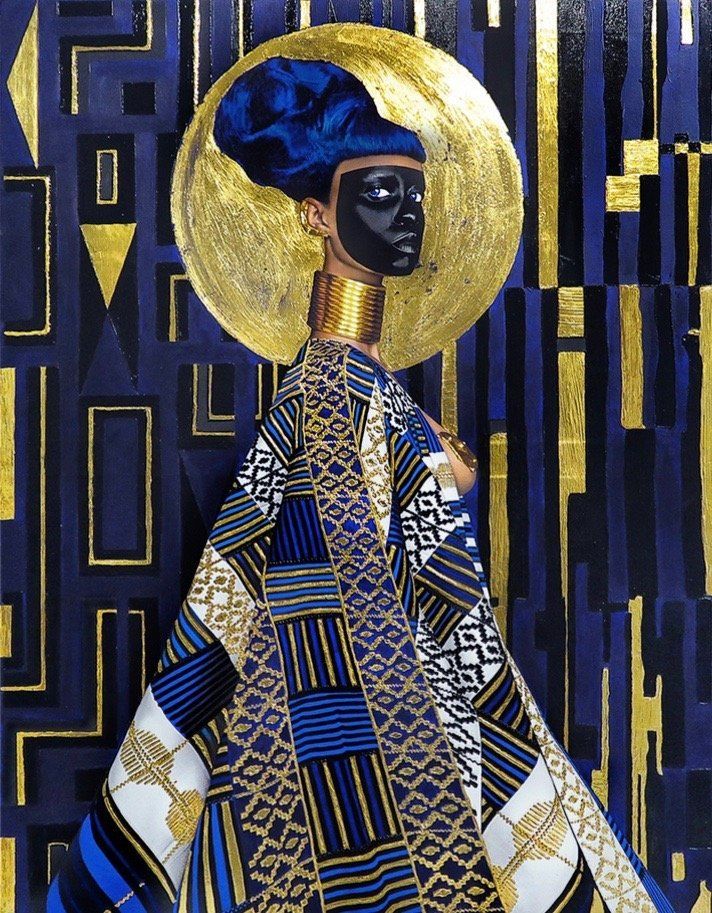
In self-portraits combining photography and painting, Lina Iris Viktor transforms herself from human to icon. “The image is not about self,” she explained in an interview with HuffPost, “but rather dis-identification, abstraction and transformation.”
Drawing inspiration from science, history, cosmology and spirituality, Viktor disguises herself in vibrant patterns of blue, black, white and gold ― 24-karat ― transforming into an eternal figure reminiscent of ancient queens and spiritual goddesses.
3. Saya Woolfalk
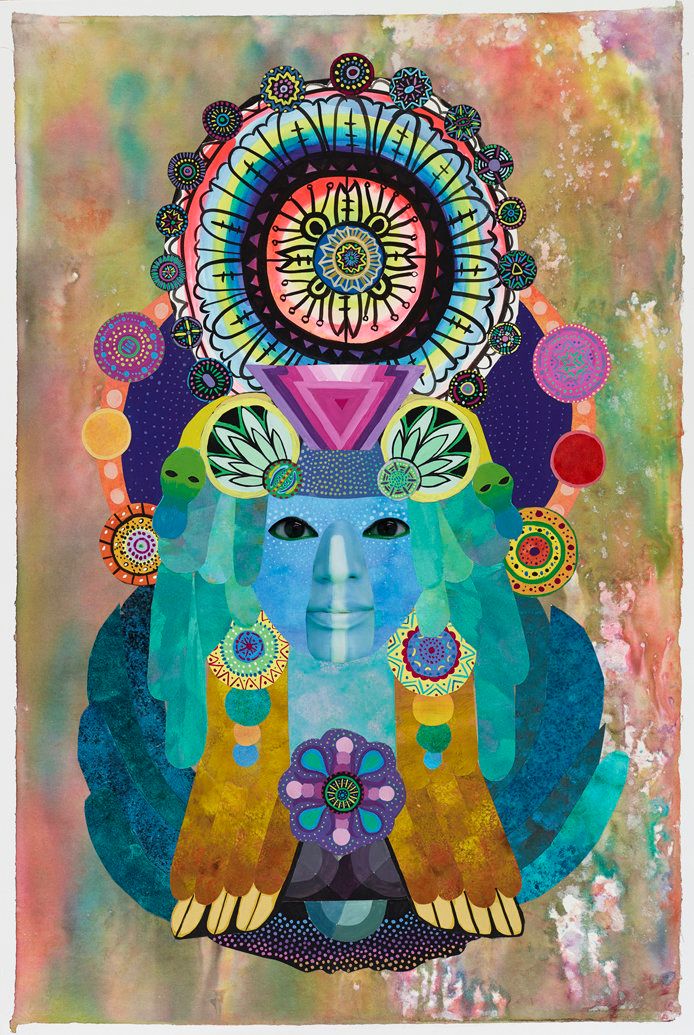
For years, Saya Woolfalk’s practice has revolved around the Empathics, a mythical species of shape-shifting women who morph and evolve through contact with other cultures and breeds. Her work often takes the form of a faux-anthropological study, documenting this fantastical breed that thrives upon creativity and collaboration.
Woolfalk’s multimedia practice combines painting, sewing, collage, video, performance and design to explore the hybridized nature of identity in an imagined sci-fi future. “Science can’t necessarily get to everything that humans experience and feel,” Woolfalk told HuffPost in June. “ When science and spirituality are allowed to complement each other, people may feel a bit uncomfortable, but together they allow a more complex understanding of our world.”
4. Maidens of the Cosmic Body Running
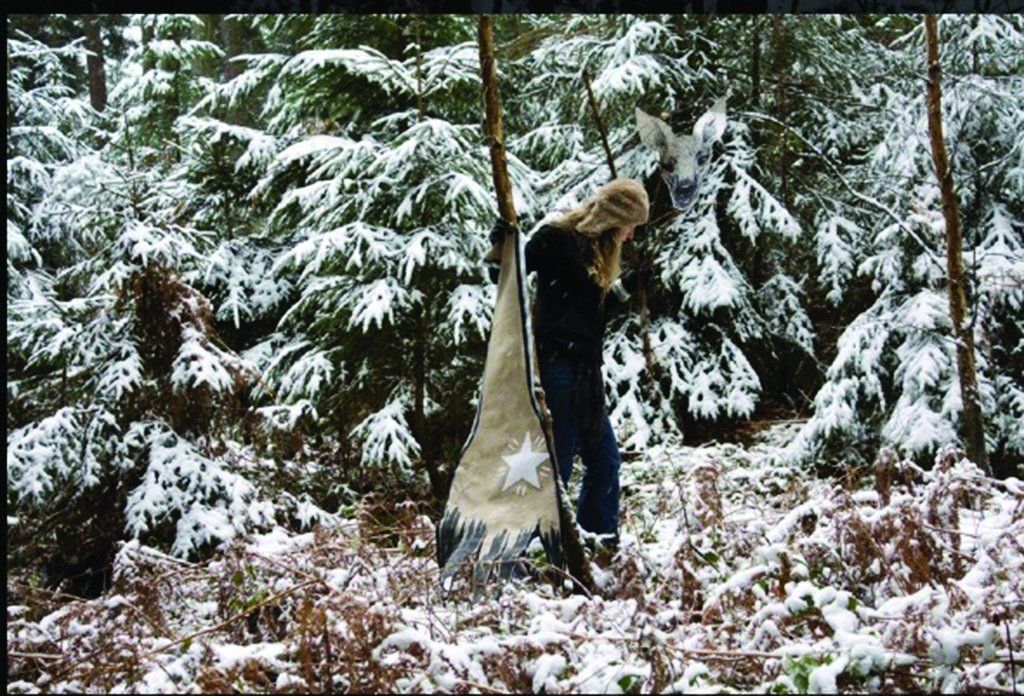
Denise Burge, Lisa Siders and Jenny Ustick make up the artist collective Maidens of the Cosmic Body Running, whose work toys with the relationship between the recorded image and the natural world.
More specifically, the artists build facsimiles of natural scenes and film dreamlike videos within them, employing mimetic images and fake backdrops to generate authentic rapture, relaxation and ecstasy. As the Maidens explained in a statement: “Faking it feels just as good ... Maybe better sometimes.”
5. Chitra Ganesh
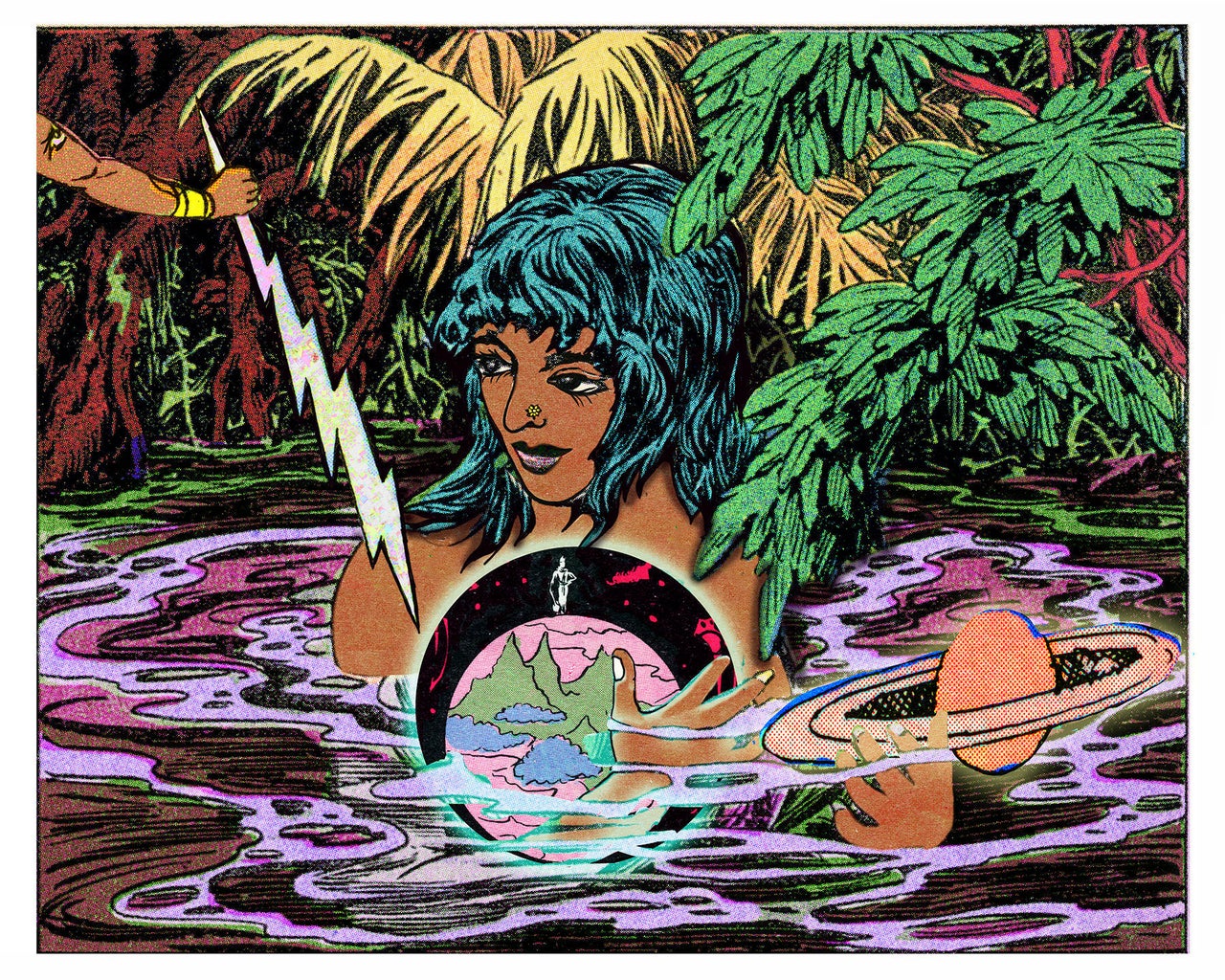
Chitra Ganesh’s artworks are a vibrant tangle of comic books and Bollywood, science fiction and Buddhist mythology, 1960s psychedelia and Grimm’s fairy tales. Tying all the deliciously disparate references together is a feminist perspective that imbues her female characters with agency, passion and a guarantee that the visual narratives will feature no simple, happy endings.
As the artist explained in an interview with Guernica: “Having the space to have a lot of unanswered questions and unresolved narratives is really soothing. It’s oppressive to have happily-ever-after all the time. So oppressive.”
6. Renée Stout
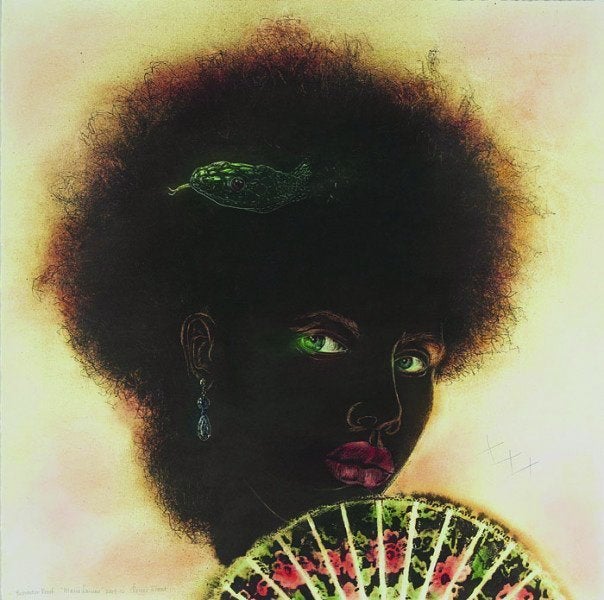
Through painting, mixed-media sculpture, photography, installation and assemblage, artist Renée Stout explores African-American heritage, personal history and African-inspired beliefs as they exist in African diasporas across the United States. “They all have their basis in traditional African beliefs, although there’s a variation from environment to environment within the country, wherever you find the practices still alive,” she explained in an interview with the Charleston City Paper.
Stout takes inspiration from cult figures including Marie Laveau, the legendary Voodoo Queen of New Orleans. According to myth, Laveau used the occult to obtain information from the wealthy patrons who visited her brothel in the early 19th century. Stout also occasionally assumes the identity of a character, Fatima Mayfield, who engages in fortune telling and other spiritual rituals.
7. Connie Roberts

Although trained as a figurative painter, Connie Roberts creates folk-inspired sculptures that take inspiration from pop culture elements including cartoons, politics, nursery rhymes, and snack food. Her piece “Gypsy Lady Head” depicts a Tarot card reader, alluding to the many unknown mystical forces that govern even the most mundane aspects of our daily lives. The statue also functions as a whistle, containing many whistle components hidden within the fortune telling devices.
8. Elizabeth Insogna
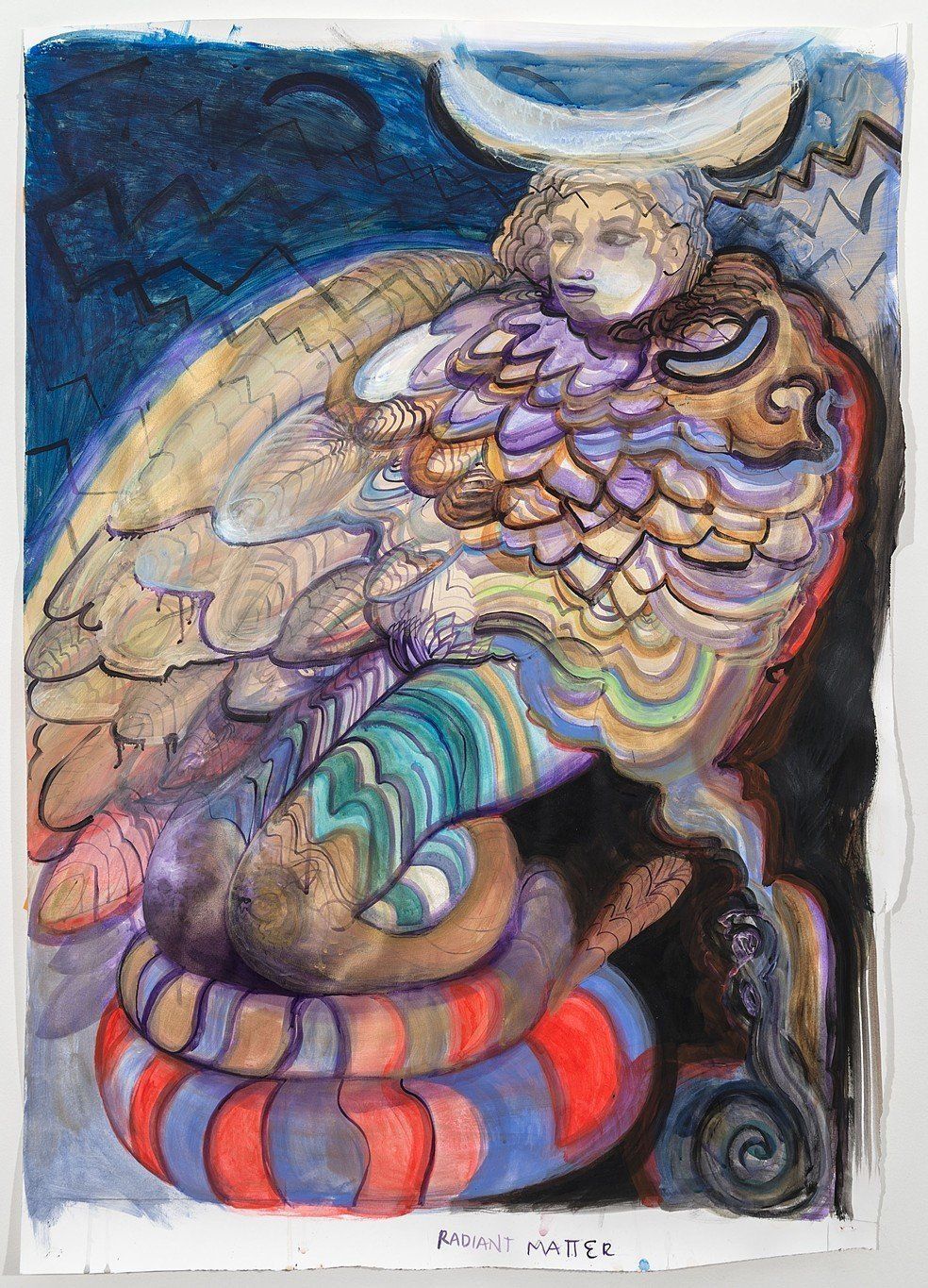
Elizabeth Insogna’s acrylic and ink works reflect on the gods and goddesses of classical mythology, specifically the roles they play in contemporary society. In “Soul is a Serpent Bird,” featured above, for example, Insogna depicts the Mesoamerican god Quetzalcoatl, a combination of a bird and a serpent that symbolizes the soul’s journey after death.
“The ritual space functions as a kind of psychic cauldron for my imagery,” Insogna said in a statement. “I borrow from traditional pagan earth-based magic, but through queering at the roots it becomes deeply personal, workable, positive. For me it’s a space that purposefully digs toward the hidden, veiled and lost areas for the ever shape-shifting divine feminine which encompasses the whole thing, even the masculine parts.”
9. Klara Kristalova
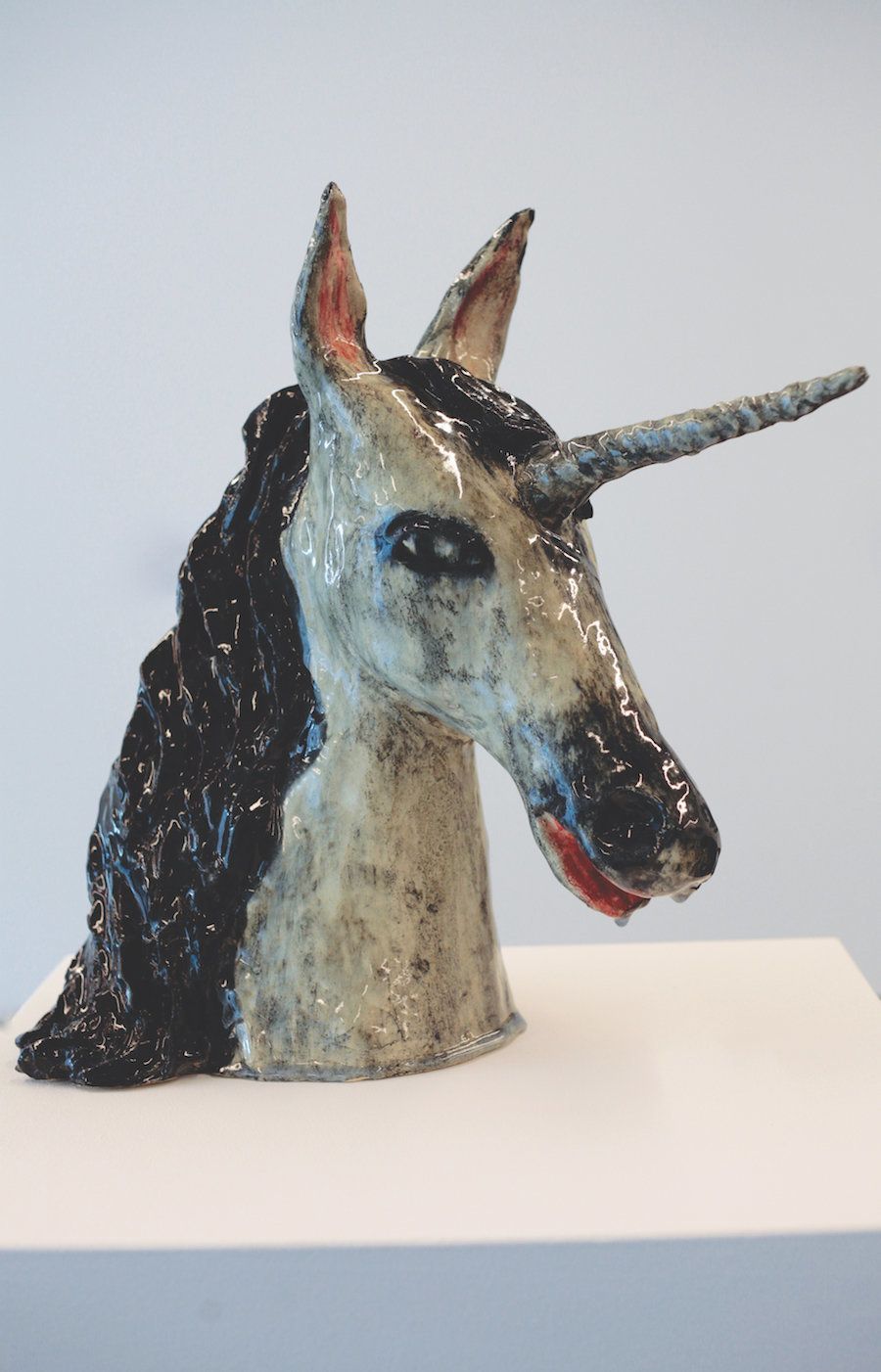
Klara Kristalova’s glazed stoneware sculptures exist somewhere between a real-life encounter and a distant memory, a dream and a nightmare, the crisp outlines of a fact and the fuzzy forms of an idea. Her work pays homage to Dresden porcelain dolls, though their sugary sweetness is replaced with something darker and stickier.
“For me, it’s hard to imagine happiness without ever experiencing sadness,” the artist said in an earlier interview with HuffPost. “I find my work boring if it totally lacks some kind of darker shade. And of course there is darkness in childhood as well as lightness.” Drawing from iconic imagery from myths and fairy tales, Kristalova crafts fuddled, disorienting visions that resemble somewhat successful attempts to recall the past night’s dream.
10. Laura Donefer
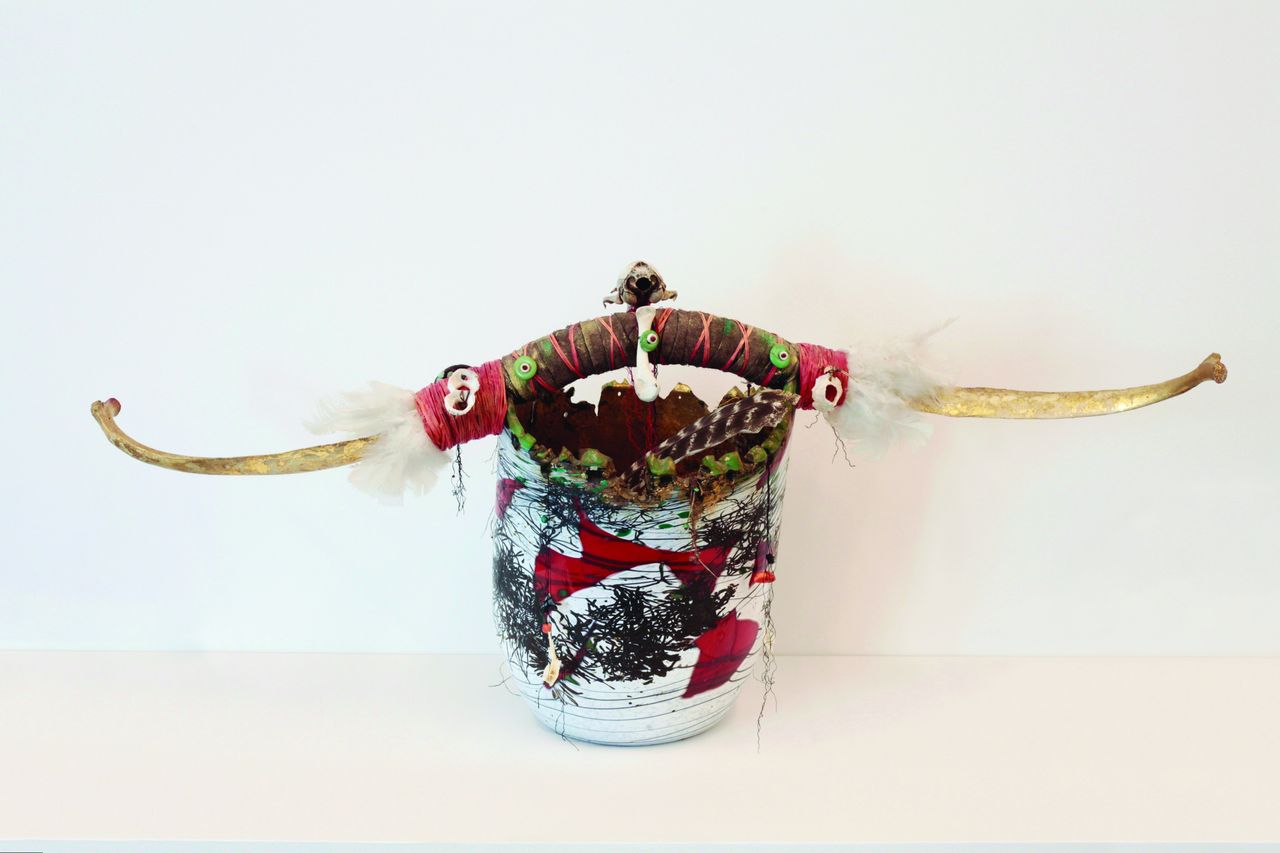
Laura Donefer crafts what she calls “Witch Pots,” vessels made from glass, with materials like animal bones, feathers and snakeskin ensnarled within them. The glass pots exist in conversation with the traditional “witch’s cauldron,” the cast-iron receptacle that grants wishes and casts spells in fiction’s most well-known tales of sorcery and enchantment.
“So I choose liquid heat as my main medium, and working with molten glass is like dancing with magma right out of the earth,” Donefer explains in her artist’s statement. “It is hot and it is dangerous, and sometimes it feels like you are making love with the very essence of creation. For me glass is a metaphor for life. It has become the perfect material for my expression, and it is an extraordinary sensuous act when I am working it hot.”
“Sisters of the Moon” runs until Jan. 8, 2017, at KMAC Museum in Kentucky.
